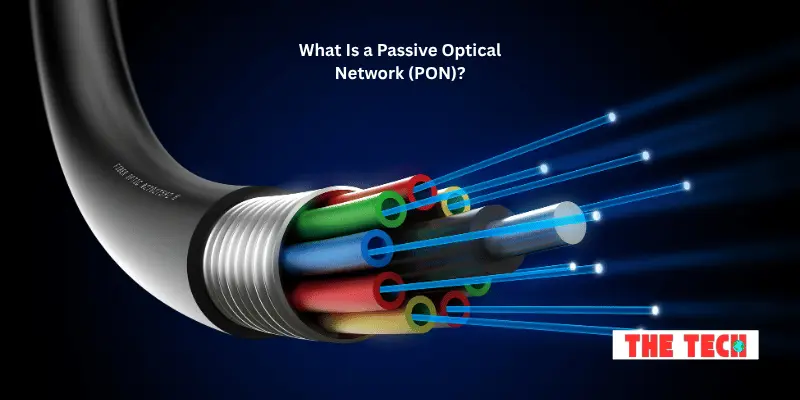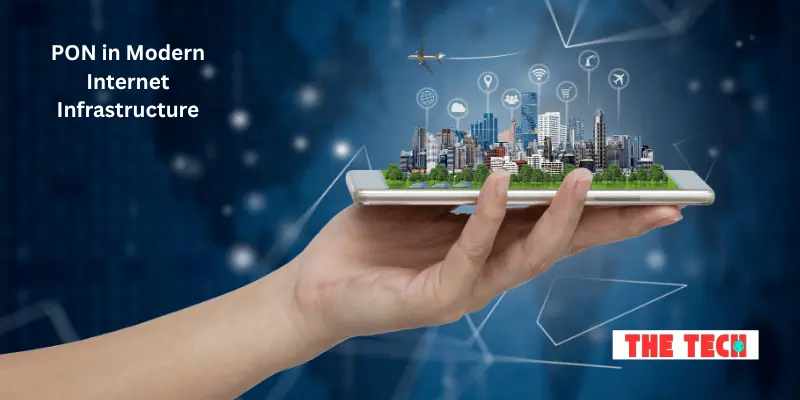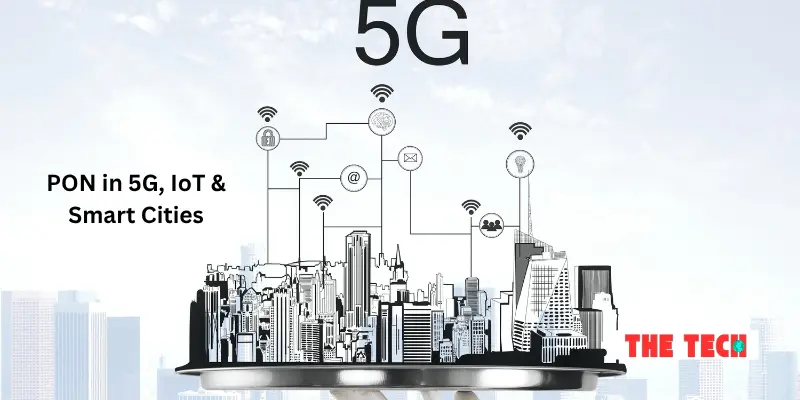What is Passive Optical Network (PON)? All You Need to Know
Published: June 13, 2025
Tired of slow, unreliable internet? You’re not alone—and the solution is here. Meet Passive Optical Network (PON)—a game-changing technology powering the future of high-speed internet. But what is PON, really?
In simple terms, it’s an innovative, energy-efficient way to deliver lightning-fast internet through fiber optics—perfect for homes, offices, and entire cities.
If you’ve ever heard the term PON internet or wondered about the passive optical network meaning, you’re in the right place. Let’s break it down in the simplest way possible.
What Is a Passive Optical Network (PON)?

The full form of PON is Passive Optical Network. It’s a fiber-optic system used to deliver high-speed internet, voice, and video data to users without needing power in between.
PON Meaning – A Simple Explanation
A passive optical network is called “passive” because it doesn’t use any powered equipment between the primary source and the user.
It sends data using light signals through fiber optic cables, making it more energy-efficient and reliable.
Visualize PON Like a Tree
Think of a PON like a tree. The main fiber line from the service provider acts as the trunk, and the connections to homes or businesses are like the branches.
This structure enables a single main line to serve multiple users efficiently.
Difference Between Passive and Active Optical Networks
Here’s how a passive optical network (PON) compares to an active optical network (AON):
- Power: A PON doesn’t need electricity in the middle; an AON does.
- Cost: PONs are usually more affordable to set up and maintain.
- Complexity: PONs are simpler with fewer active components; AONs involve more equipment and higher management.
In simple terms, PON networking is an innovative and cost-effective way to deliver high-speed internet using fewer components.
That’s the core of the passive optical network definition and why it’s growing in popularity across the telecom world.
How Does a PON Work?
Now that you know what a PON is, let’s understand how it works behind the scenes.
A Passive Optical Network uses fiber optic cables to send data from the service provider to multiple users. It does this using just a few key components—no complex machinery in the middle.
Key Components of a PON System
OLT (Optical Line Terminal)
This is the main control center located at the service provider’s end. It sends and receives data to and from multiple users. Think of it as the brain of the entire PON fiber system.
Splitter: This is a passive device (it doesn’t need power) that divides the signal from the OLT and sends it out to multiple users. One fiber line can be split to serve many homes or offices—efficient and cost-saving.
ONU/ONT (Optical Network Unit / Terminal)
These are installed at the user’s location (home or business).
They receive the signal from the splitter and convert it into internet, voice, or TV signals that devices can use. You may hear people refer to this as the PON box.
PON Cable, Port, and Connector
- The PON cable is the fiber optic line that carries the signal.
- The PON port is where the fiber optic cable connects to the equipment, such as the Optical Network Unit (ONU) or Optical Line Terminal (OLT).
- The PON connector ensures seamless data transmission by ensuring everything is linked correctly.
Passive Optical Network Architecture – A Simple Flow
Here’s how everything connects:
OLT (at provider) → Splitter → ONU/ONT (at user)
There are no powered devices between them, which keeps the system reliable and straightforward.
This setup is what makes the passive optical network architecture so efficient—it uses light, splits it smartly, and delivers high-speed internet directly to users, all while using minimal hardware.
PON in Modern Internet Infrastructure

The Passive Optical Network (PON) plays a significant role in the way we use the internet today. It’s not just about fast browsing—it’s about building a strong, scalable, and smart internet backbone for everyone.
Everyday Use: Homes, Offices & Smart Cities
- Homes (FTTH – Fiber to the Home): PON is commonly used to deliver high-speed internet directly to homes. With a PON modem or PON router, users enjoy faster downloads, smoother streaming, and better gaming without interruptions.
- Enterprises: Businesses use PON networks to connect multiple departments and devices with a single, cost-effective setup. It’s secure, energy-efficient, and easy to scale as the company grows.
- Smart Cities: In modern cities, PON helps power services such as public Wi-Fi, intelligent traffic systems, surveillance, and even bright lighting—all through a single, robust fiber network.
Role in Telecom and ISPs
Telecom companies and internet service providers (ISPs) rely on telecom PON to deliver high-speed data over long distances.
It enables them to serve multiple users through a single network using minimal equipment.
Whether it’s PON WiFi, a PON box, or a cable PON setup, the goal is the same: faster, more reliable connections with lower costs.
From your living room to a bright streetlight, PON technology is helping power the internet world more efficiently than ever before.
Types of Passive Optical Networks
There isn’t just one type of PON—there are several, each designed for different speeds and needs. Let’s look at the most common ones and how they compare.
- GPON (Gigabit Passive Optical Network): What is GPON in telecom? GPON is one of the most popular types of PON. It delivers fast internet, with download speeds of up to 2.5 Gbps.
- GPON meaning: Gigabit PON: Telecom companies widely use it to serve homes and businesses. It supports voice, video, and data on the same network.
- EPON (Ethernet Passive Optical Network): EPON operates similarly to GPON, but utilizes Ethernet instead of ATM (Asynchronous Transfer Mode) for data transport.
What is EPON used for? It’s a good choice for areas where Ethernet is already standard.
Often used in countries like China and Japan.
- XG-PON, 10G-PON, NG-PON2: These are next-generation PON technologies that offer significantly faster speeds.
- XG-PON offers up to 10 Gbps.
- NG-PON2 can go even further and support multiple services simultaneously.
Best for large enterprises, data centers, and future-ready smart cities.
Advantages of PON
Passive Optical Networks (PONs) offer numerous benefits that make them a top choice for modern internet systems. Here’s why they stand out:
| Advantages of PON |
|---|
|
Thanks to these features, PON technologies, passive optical components, and innovative PON solutions are helping build faster, greener, and more reliable networks around the world.
Disadvantages and Limitations
While PON is a great technology, it’s not perfect. Like every system, it has a few downsides that you should be aware of.
| Disadvantages and Limitations of PON |
|---|
|
Despite these challenges, PON remains a popular choice due to its balance of performance, cost, and efficiency.
PON in 5G, IoT & Smart Cities

Passive Optical Network (PON) is not just for homes anymore—it’s playing a significant role in the future of technology, especially in 5G, smart cities, and the Internet of Things (IoT).
- Supports 5G Mobile Backhaul: 5G requires fast and reliable connections between cell towers and data centers. PON is an excellent solution for this because it offers high bandwidth and low latency. It helps carry large amounts of data from mobile networks without delay.
- Perfect for IoT and Edge Computing: IoT devices (like smart cameras, sensors, and meters) need quick responses and real-time data. PON brings data closer to the edge of the network, where processing happens faster. This is perfect for smart homes, bright traffic lights, and city-wide systems.
- Building the Future of Digital Infrastructure: With the rise of broadband PON, cities and industries are turning to fiber for everything—whether it’s better internet, secure connections, or powering innovative systems. PON will be a big part of the digital world we’re building.
Security and Reliability in PON Networks
When it comes to internet connections, security and reliability are just as important as speed. The good news? PON networks offer strong protection and dependable performance.
- Optical-Layer Encryption: Modern PON systems can utilize optical-layer encryption, which secures data at the fiber level. It helps keep your information safe from hackers or unwanted access while traveling through the network.
- Self-Healing Topologies: Some advanced PON setups use self-healing topologies, which is a smart way of saying the network can reroute itself if something breaks. This reduces downtime and keeps the internet running smoothly, even when a fiber line is damaged. (Most competitors miss this part!)
- Physically Secure: Fiber cables are more complicated to tap into or tamper with than copper wires. That makes PON naturally more secure from physical threats. Also, since it uses fewer active components, there are fewer points of failure.
In short, PON doesn’t just offer fast internet—it also brings strong safety and reliability for both homes and businesses.
PON Equipment: Key Components
To understand how a Passive Optical Network (PON) works, it is helpful to know about the main components that make it all function. Let’s break them down in easy terms:
- OLT (Optical Line Terminal): OLT stands for Optical Line Terminal. It sits at the service provider’s end (like your internet company) and is the main control center of the PON. It sends data out to homes or businesses and also receives data back from them.
Think of it as the brain of the network, managing all the traffic over the fiber. - ONT / ONU (Optical Network Terminal / Optical Network Unit)
Both ONT and ONU are devices installed at the user’s end (your home or office). ONT (Optical Network Terminal) is usually used in home setups. ONU (Optical Network Unit) can be used in multi-user buildings or larger setups. They convert light signals from the fiber into regular internet signals that your devices can use (such as Wi-Fi or Ethernet). - Splitters: Splitters divide the signal coming from the OLT into multiple paths, so one fiber can serve many users. They don’t need power, which keeps things simple and efficient.
- Fiber Optic Cables: These are the wires that carry data as light. They connect everything—from the OLT to splitters to ONTs/ONUs.
- PON Ports and Cards: The PON port is where the fiber connects to the OLT or ONT.
PON cards are hardware modules installed in the OLT to allow it to serve multiple users. Think of them like extension cards that enhance the number of users an OLT can support.
All these components work together to deliver fast, stable, and reliable internet directly to your home or office.
PON vs. Other Technologies
Let’s see how PON compares to other popular internet delivery methods. This will help you understand why PON is gaining popularity and its place within the context.
PON vs. Active Ethernet
PON uses passive components—no power needed between you and your provider. It’s simple, energy-efficient, and great for wide coverage.
Active Ethernet, on the other hand, requires powered devices (such as switches) along the path. It offers dedicated bandwidth but can be more expensive to install and maintain.
PON vs. DSL / Cable
DSL and Cable use older copper wires and are limited in speed and distance. They’re fine for basic browsing, but struggle with high-speed needs.
PON, utilizing fiber optics, delivers significantly higher speeds and enhanced reliability, making it ideal for HD streaming, work-from-home setups, and smart devices.
Troubleshooting: What Does “PON Light” Mean on a Router?
If you’ve ever looked at your router and wondered what the “PON” light means, you’re not alone. It’s one of the most common indicators you’ll see, especially if you’re using a fiber internet connection.
What Does the PON Light Mean?
- Green PON Light: Everything is working fine. Your router is connected to the fiber network, and you have an active internet connection.
- Blinking Green: Your router is attempting to establish a connection to the network. This usually happens during setup or a reset.
- Red PON Light: There’s a problem. Your router is not receiving a proper signal from the network. It could be due to a loose fiber cable, service outage, or an issue at the provider’s end.
What Does “PON ON” or “PON OFF” Mean?
- PON ON: The router is actively connected to the Passive Optical Network.
- PON OFF: The router is not connected to the network, possibly due to a disconnection or signal failure.
What Should You Do?
- Check your cables – Make sure the fiber optic cable is plugged in correctly.
- Restart the router – Sometimes, a quick reboot can fix connection issues.
- Contact your ISP – If the red light stays on, your internet provider might need to check the connection from their end.
Future of Passive Optical Networks
The world of internet technology is constantly evolving, and Passive Optical Networks (PONs) are no exception. The future promises to be even faster, more intelligent, and more connected.
What’s Coming Next?
- 50G-PON and NG-PON3: These are the next-generation versions of PON, offering super high speeds (up to 50 Gbps!). They’ll support future needs, such as 8K streaming, VR, and ultra-fast cloud access.
- Convergence with Wireless: PON will work more closely with 5G and future wireless technologies, helping to deliver smooth, fast internet everywhere, even while you’re on the move.
- AI-Based Fault Prediction: With artificial intelligence, future PON systems will detect and fix problems before they affect your internet. That means fewer downtimes and better reliability.
Global Reach
- Rural Broadband: PON is also being used to bring internet to remote areas where laying cables is expensive. Its long-distance and cost-effective design makes it perfect for bridging the digital divide.
- Smart Cities & Global Infrastructure: As cities grow smarter, PON will play a significant role in connecting everything—from traffic lights to hospitals and schools.
The future of PON isn’t just about speed—it’s about building a more connected and intelligent world.
FAQs
Yes, PON uses fiber optics, which are much faster and more reliable than old copper cables. It offers higher bandwidth and supports longer distances without signal loss. Unlike copper, it’s also resistant to electromagnetic interference. Overall, it’s a better choice for modern internet needs.
Yes, you can use your own router, but you’ll still need the ONT (Optical Network Terminal) from your service provider. The ONT connects to the fiber line and converts the signal. After that, you can connect your personal Wi-Fi router to the ONT. This helps you customize your network and get better coverage.
A red PON light usually means there is a problem with your fiber connection. It could be a broken cable, loose connector, or an issue from your internet provider’s side. The connection may stop working until the issue is fixed. In most cases, contacting your Internet service provider (ISP) is the best step.
A single PON port on an OLT can serve multiple users, often up to 32 or even 64. The fiber signal is split to reach different homes or offices. However, the bandwidth is shared, so internet speed may slightly drop during heavy usage times. Even then, it’s usually faster than DSL or cable.
Yes, PON is considered a very secure protocol. The system can utilize encryption at the optical layer to maintain the privacy of your data. Also, because the fiber connection is point-to-multipoint, it’s harder to tap into without being noticed. It offers strong protection compared to older systems.
No, that’s one of the significant advantages of PON. Only the start point (OLT) and endpoint (ONT) need power. The middle part of the network, including the splitters, doesn’t require electricity. This makes the system simpler, cheaper, and more reliable.
Yes, PON can handle internet, voice (such as landline calls), and IPTV (TV over the internet) using a single fiber optic line. This makes it a flexible option for homes and businesses. Many service providers use PON to deliver all three services together. It saves space and simplifies setup.
The fiber cables used in PON systems can last for over 25 years if installed correctly. However, electronic parts, such as the ONT and OLT, may require upgrades every 5–10 years. These upgrades enhance speed and support the latest technologies. Overall, PON is a long-term and future-ready solution.
Yes, PON is ideal for rural areas because it can deliver internet over long distances without the need for repeaters. This makes it cost-effective for large areas with fewer homes. Many government and private projects use PON to expand broadband in remote regions. It’s an innovative solution for bridging the digital divide.
Upgrading to faster versions, such as 10 G-PON or 50 G-PON, typically requires new Optical Line Terminals (OLTs) and Optical Network Terminals (ONTs) that support higher speeds. However, the existing fiber cables and splitters often remain the same. This makes upgrading easier and less costly. Your provider will guide you through the process at the right time.
Conclusion
Passive Optical Network (PON) is the future of fast, reliable, and cost-effective internet. Whether it’s for homes, offices, or smart cities, PON technology delivers high-speed connectivity with low maintenance.
It utilizes fiber optics to deliver a powerful internet connection through a shared yet secure network.
As demand grows for better digital infrastructure, understanding what PON is and how it works helps us stay connected, smarter, and faster.
Bonus Info Points
- PON is Energy Efficient: Since it doesn’t need power in the middle (no active electronics), it saves energy and reduces electricity bills.
- Low Latency Makes It Ideal for Gaming and Streaming: The fast and stable nature of PON connections makes it perfect for activities such as online gaming, 4K video streaming, and video conferencing.
- Supports Triple Play Services: PON can deliver data, voice (VoIP), and TV (IPTV) through a single fiber line, which is excellent for bundled telecom packages.
- Easy to Scale for Future Growth: Telecom companies can add more users or upgrade speed with minimal changes to the physical network.
- PON is the Backbone of FTTH (Fiber to the Home): Most modern fiber-to-home connections are powered by PON, making it widely used and trusted worldwide.
- PON Reduces Long-Term Maintenance Costs: With fewer active parts in the field, there are fewer chances of breakdowns or replacements needed.
- Compatible with 5G and Edge Computing Needs: Its low-latency, high-bandwidth nature supports modern innovations like smart cities, IoT, and 5G networks.
- Security Upgrades Are Constantly Improving: New technologies, such as optical-layer encryption and self-healing designs, are enhancing the security and reliability of PON networks.

- Be Respectful
- Stay Relevant
- Stay Positive
- True Feedback
- Encourage Discussion
- Avoid Spamming
- No Fake News
- Don't Copy-Paste
- No Personal Attacks



- Be Respectful
- Stay Relevant
- Stay Positive
- True Feedback
- Encourage Discussion
- Avoid Spamming
- No Fake News
- Don't Copy-Paste
- No Personal Attacks





